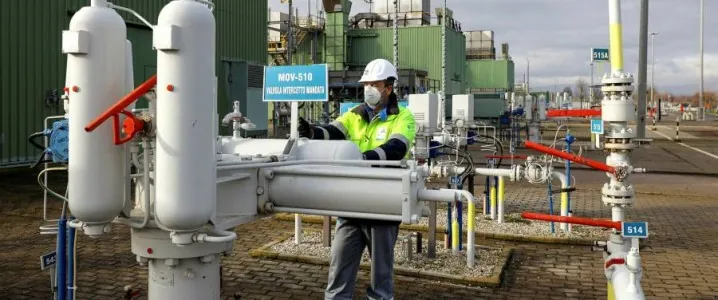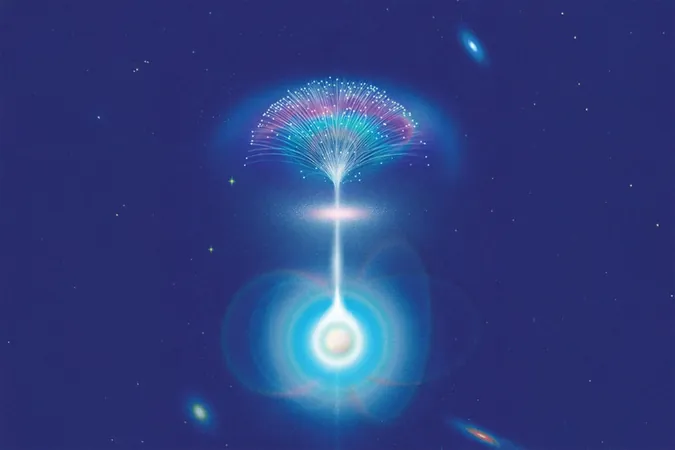
Germany and Italy Step Up as Russia's Gas Supply Ends via Ukraine
2025-01-06
Author: Liam
Germany and Italy Compensate for Russian Gas Supply Cessation
In a significant shift within the Central European energy landscape, Germany and Italy have successfully compensated for the cessation of Russian gas flows through Ukraine. Following the termination of a five-year gas transit agreement between Ukraine and Russia, Austria has swiftly adapted its gas imports, relying heavily on neighboring Germany and Italy to make up for the loss.
Strategic Pivot Amid Supply Disruptions
The recent halt in gas supplies from Slovakia has prompted a strategic pivot. Slovakia has resorted to a connection with Hungary as its only import channel at the start of this year since Gazprom ceased shipments to Slovenský plynárenský priemysel (SPP) after Ukraine's transit deal expired.
New Partnerships and Supply Safety
Energy analysts previously warned that Austria, Hungary, and Slovakia would be among the hardest hit by the suspension of Russian gas. However, timely solutions have emerged. Notably, Azerbaijan’s state oil company, SOCAR, began providing natural gas to Slovakia’s SPP last year, marking a crucial partnership formed just as SPP sought alternatives in anticipation of Russian supply disruptions. While Slovakia aims to maintain supply to its customers primarily through German and Hungarian pipelines, it acknowledges the additional transit costs involved.
Shift in European Gas Supply Landscape
On a broader scale, the United States appears poised to emerge as a key beneficiary of this European energy crisis. Recent figures reveal that the U.S. and Norway have overtaken Russia as Europe’s leading gas suppliers. In the past year, Norway contributed 87.8 billion cubic meters (bcm) of gas, accounting for 30.3% of total European imports, while the U.S. supplied 56.2 bcm, making up 19.4%.
U.S. Dominance in LNG Exports
The most remarkable aspect of this shift is the U.S.'s dominance in liquefied natural gas (LNG) exports to Europe. In 2023, U.S. LNG constituted nearly half of Europe's total imports—an impressive climb from 27% in 2021 to 44% in 2022, and hitting 48% in 2023. As Europe’s infrastructure improves, its LNG import capacity is projected to rise to 29.3 billion cubic feet per day (Bcf/d) by 2024, representing a 33% increase compared to 2021 levels. Germany is leading this transformation with substantial investments in LNG regasification, adding 1.8 Bcf/d in 2023 and an anticipated 1.6 Bcf/d in 2024.
Navigating the Energy Crisis
This energy transition not only highlights the resilience of Central Europe in navigating the current crisis but also underscores shifting alliances and dependencies in the global energy market. As European nations continue to adapt to a post-Russian gas supply era, keeping an eye on developments in energy procurement strategies could be vital for maintaining energy security across the continent.
Looking Ahead
Stay tuned as this dynamic situation unfolds, and explore how countries gear up for a new energy landscape!









 Brasil (PT)
Brasil (PT)
 Canada (EN)
Canada (EN)
 Chile (ES)
Chile (ES)
 Česko (CS)
Česko (CS)
 대한민국 (KO)
대한민국 (KO)
 España (ES)
España (ES)
 France (FR)
France (FR)
 Hong Kong (EN)
Hong Kong (EN)
 Italia (IT)
Italia (IT)
 日本 (JA)
日本 (JA)
 Magyarország (HU)
Magyarország (HU)
 Norge (NO)
Norge (NO)
 Polska (PL)
Polska (PL)
 Schweiz (DE)
Schweiz (DE)
 Singapore (EN)
Singapore (EN)
 Sverige (SV)
Sverige (SV)
 Suomi (FI)
Suomi (FI)
 Türkiye (TR)
Türkiye (TR)